Your choice to shoot a smaller sensor DSLR brings some lens choice advantages as well, with an additional range of APS-C only DX mount lenses adding to the full frame FX options that remain compatible with the D500.
So which are the best lenses for your new D500? It depends a little if you’re looking to maximise the resolution potential of the D500’s 20.8Mp APS-C sensor with an FX lens, or you’re after a dedicated DX lens, which can bring other benefits – notably size and price.
Designed specifically for APS-C DSLRs, DX lenses are generally smaller, lighter and cheaper to manufacture than their FX counterparts, as they only need to produce an image circle big enough to cover the smaller APS-C sensor. DX lenses generally provide lower overall image quality compared to FX lenses however, and if we look at the top ten highest ranked lenses on the D500, they’re all FX lenses.
There are only a limited number of Nikon F mount DX primes available for the Nikon D500 too, as manufacturers tend to focus their energies on the more versatile zooms that are often preferred by APS-C shooters. So including both DX and FX formats in a ‘best lenses’ review would result in very little coverage of the few dedicated DX options available, as they’re simply out scored by their FX counterparts.
Instead the focus of this review is those DX primes, with some FX options included for comparison and to keep things in perspective. For a more detailed analysis of the best performing FX lenses for Nikon, you can check out our recently published D5 Best Lenses Review.
The Lens Metrics Scores will not be exactly the same tested on the D5 and D500, but it’s going to give you a good steer on the top performers, and we’ve also included some analysis of the performance trends of FX lenses when tested on APC-S sensors in the ‘How FX lenses perform on APS-C’ section below.
We’ve tested seven DX format prime lenses on the Nikon D500, with scores ranging from a high of 29 points on the Sigma 30mm f/1.4 DC A to a low of 20 points on the Nikon DX 85mm f/3.5G.
We’ve analysed the results of these DX primes on the D500 in two categories including the best standard prime with equivalent focal lengths between 45-60mm, and the best telephoto prime looking at the two available 60mm and 85mm (90mm and 127mm equivalent) DX options.
Best standard DX prime: Sigma 30mm f/1.4 DC HSM A
Overview
The Sigma 30mm f/1.4 DC A is the highest-scoring DX-format prime lens we’ve tested on the Nikon D500. The 30mm focal length (45mm full-frame equivalent) is slightly wider than the highest-scoring Nikon DX 35mm and 40mm standard prime options, but remains a useful focal length for portraits, street photography, and general use on the D500. The larger f/1.4 maximum aperture makes the Sigma 30mm a good low-light option, especially as none of these lenses features image stabilization. With a $499 price tag, however, the Sigma 30mm f/1.4 DC A is over twice the price (as well as over twice the weight) as the Nikon 35mm f/1.8G.
Sigma 30mm f/1.4 DC A highlights
- Excellent light transmission
- 9-bladed f/1.4 aperture for attractive bokeh
- Very good center field sharpness between f/2.8 to f/8
- HSM motor for autofocus on all Nikon DSLRs
Sigma 30mm f/1.4 DC A drawbacks
- Expensive prime lens for DX shooters
- Heavy lens
- Not uniformly sharp at any aperture
Nikon DX 35mm f/1.8G highlights
- Very affordable
- Small and lightweight
- Fast f/1.8 maximum aperture
- SWM AF motor for autofocus on all Nikon DSLRs
Nikon DX 35mm f/1.8G drawbacks
- Not uniformly sharp at any aperture
- Lower sharpness at f/11 compared to Sigma 30mm f/1.4 DC A
- Some chromatic aberration between f/5.6 to f/11
Nikon DX 40mm f/2.8G highlights
- Cheapest 1:1 macro lens for Nikon APS-C DSLR
- Nice 60mm equivalent focal length for portraits
- Fast f/2.8 maximum aperture
- Good edge sharpness between f/4 and f/8
Nikon DX 40mm f/2.8G drawbacks
- Lower light transmission than the competition
- No f/32 minimum aperture
Overall image quality
These are three of the highest-performing and sharpest DX-format lenses we’ve tested on the Nikon D500. Both the Sigma 30mm and Nikon 35mm boast some of the best light transmission available on a DX-format lens, making them suitable for low-light photography. For sharpness, the Nikon 35mm scores the lowest overall, but remains capable of some good center sharpness at most apertures. The 40mm offers the best edge sharpness at most settings and virtually no distortion, providing high-quality results for portraits and macro shots.
Other options
Better image quality is available in this focal range using FX-format full-frame lenses such as the Sigma 35mm f/1.4 A DG. It boasts improved sharpness, distortion, and chromatic aberration over the Sigma and Nikon DX-format options. Crucially, sharpness is significantly better at the edges of the frame using the Sigma 30mm f/1.4 DC A on the D500, with very nearly uniform resolution at all apertures. Peak sharpness is reached between f/4 to f/8, with very respectable results at f/1.4, too. It’s a larger and heavier lens, however, and while it’s not particularly unbalanced on the larger Nikon D500 DSLR, it might be more bulk than you would want to carry. At $899, it’s significantly more expensive, too.
Conclusion
The Sigma 30mm f/1.4 A DC, Nikon 35mm f/1.8G and Nikon 40mm f/2.8G produce some of best image quality we’ve seen for DX-format lenses on the D500. They’re small and lightweight, making them convenient to use, and really well-priced – particularly the $197 Nikon 35mm f/1.8G and the $277 Nikon 40mm f/2.8G.
They’re all good for portraits, with large maximum apertures and standard to short-telephoto focal lengths to keep features in proportion. The Nikon 40mm f/2.8G offers true 1:1 macro magnification for under $300, which can open up a whole new world of creative possibilities. For low light or very out-of-focus background bokeh, the larger maximum apertures on the f/1.4 or f/1.8 alternatives are desirable, and although better image quality is available at this focal length on the FX-format Sigma 35mm f/1.4 A, it’s a significantly larger, heavier, and more expensive option.
Specifications
Best telephoto DX prime: Tamron 60mm f/2 Di II
Overview
We’ve tested two short-telephoto DX prime options for the D500, which both feature 1:1 macro focusing, making them good options for both portraits and close-up photography. The Tamron 60mm f/2 Di achieves a higher overall score of 25 points, with improved lens metrics in all categories except distortion when compared to Nikon’s own DX 85mm f/3.5G.
The Tamron 60mm f/2 also boasts a more versatile focal length for portraiture and macro photography on the D500, as well as a larger f/2 maximum aperture for shallow depth-of-field portraits and low-light shots.
Although a little long for certain portraiture, the Nikon 85mm’s focal length (127mm equivalent) is good for headshots on the D500, and benefits from a minimum f/32 aperture for longer depth-of-field macro photography, as well as image stabilization. Both lenses cost just over $500, with the Nikon 85mm a little longer in physical length, but slightly lighter than the Tamron 60mm f/2 Di.
Tamron 60mm f/2 highlights
- 1:1 macro magnification
- f/2 maximum aperture
- Good portrait focal length on D500
- Good uniform sharpness f/5.6 and f/8
Tamron 60mm f/2 drawbacks
- No f/32 aperture for macro
- Under 50% acutance at f/22
- Minor outer field chromatic aberration
Nikon DX 85mm f/3.5-5.6 highlights
- 1:1 macro magnification
- f/32 minimum aperture
- Image stabilization (VR)
- No chromatic aberration
Nikon DX 85mm f/3.5-5.6 drawbacks
- Low light transmission
- Peak sharpness below 70% P-Mpix
- Less versatile 127mm-equivalent focal length
Overall image quality
The Tamron 60mm f/2 Di is one of the sharpest DX primes we’ve tested on the D500, achieving the same 13 P-Mix as the top-ranked Sigma 30mm f/1.4 A DC. Slightly lower scores for vignetting, transmission, and chromatic aberration mean that the Tamron ranks in 4th place for all DX primes overall, but its lens metrics are not far behind. It hits peak sharpness at f/5.6, a good setting for your portraits on this lens, and offers its best resolution between f/4 and f/11. Sharpness at its widest f/2 and f/2.8 apertures is a little softer at around 60% P-Mpix, but remains relatively uniform.
The Nikon DX 85mm f/3.5G offers excellent distortion and chromatic aberration results, but lower results for sharpness (10 P-Mpix) and transmission (4.9 TStop) affect its overall score. It is sharpest between f/5.6 to f/11, where it offers around 70% P-Mpix resolution, with sharpness at f/32 dropping to around 40%.
Other options
Nikon offers two alternative FX 60mm lens options, both of which are a similar proposition to the Tamron 60mm f/2 Di on the D500. The $600 Nikon 60mm f/2.8G and the $517 60mm f/2.8D both rank slightly below the Tamron due to lower sharpness and light transmission scores, but the Nikon lenses offer some advantages. For portraits, the Nikons are both slightly sharper at f/2.8 compared to the Tamron, and similar at f/4. The Nikon FX options also offer smaller minimum f/32 and f/36 apertures for longer depth-of-field macro shots, and although sharpness drops below 50% P-Mpix at these settings, this isn’t uncommon for such small apertures.
Alternative 85mm options include the Nikon FX 85mm f/1.4G and 1.8G, which boast improved light transmission and sharpness compared to the DX lens. For portraits and headshots, the FX lenses offer good resolution at their widest f/1.4 or f/1.8 apertures, and are significantly sharper at f/4 compared to the Nikon DX 85mm f/3.5G. Neither of the Nikon FX 85mm lenses offer 1:1 macro focusing, however, and with minimum apertures of f/16, they’re not as good as the DX for close-up photography work.
Conclusion
For portraits and macro photography on the D500, the DX-format Tamron 60mm f/2 Di with its equivalent 90mm focal length, large f/2 maximum aperture, and 1:1 magnification has a lot to offer.
It outscores the own-brand Nikon DX macro option in most categories, and boasts a more versatile focal length compared to the Nikon DX 85mm f/3.5G’s equivalent 127mm reach. With both costing just over $500, however, there are similarly-priced FX versions available that offer better image quality. For 60mm primes, the own-brand Nikon 60mm FX f/2.8G and f/2.8D rank slightly behind the Tamron overall and don’t feature 1:1 macro, but are notably sharper at the wider aperture settings if you’re mainly after a portrait lens. For 85mm primes, the Nikon FX f/1.4G and f/1.8G both offer significantly better sharpness compared to the Nikon 85mm DX at wider maximum apertures, but don’t offer 1:1 macro. Costing $477, the Nikon 85mm f/1.8G is an attractive proposition if you can live without macro; but while it has a larger maximum aperture, the $1597 Nikon FX 85mm f/1.4G is a much heavier and more expensive proposition.
Specifications
How FX lenses perform on APS-C
You can analyze how the performance of FX lenses differs on an APS-C sensor compared to full-frame by looking at the scores for one of the top-ranked prime lenses on the D5, the Sigma 50mm f/1.4 A.
The overall score is far ahead on the D5, despite the D500’s improved results for distortion, vignetting, and chromatic aberration (primarily due to the smaller sensor capturing the higher-quality image area that the FX lens resolves towards the center of its image circle).
The D5 wins for sharpness, however, and is way ahead overall. But hang on — the D5 and D500 have similar-resolution sensors, 20.2Mp vs. 20.8Mp, and the D500’s DX sensor records the higher-quality central area of the FX lens’s image circle, so the same lens should be sharper on the D500, right?
Well, no. In simple terms, with a similar number of pixels distributed across the physically-smaller APS-C sensor, the D500’s smaller pixel pitch means it will be significantly more difficult for a lens to provide the same level of sharpness in the center of the image.
As a result, the same lens will frequently achieve a higher sharpness score when attached to a full-frame DSLR than when attached to an APS-C.
In fact, despite the seemingly close sharpness scores of 20 P-Mpix for the D5 versus 19 P-Mpix on the D500, we see much higher acutance with the same lens on the D5, and notably so at the mid- and small-aperture settings, where the effect of diffraction affects the smaller sensor more. So in summary, an FX lens on an APS-C sensor DSLR results in slightly better scores for vignetting, chromatic aberration, and distortion compared to full-frame results, but also results in a lower sharpness score.
The best lenses on full-frame DSLRs are still the best lenses on APS-C, however, so if you’re in the market for a prime that isn’t available in DX, or simply want the best-quality lens available, check out the top performers in our Nikon D5 best lenses review.


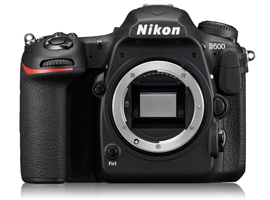
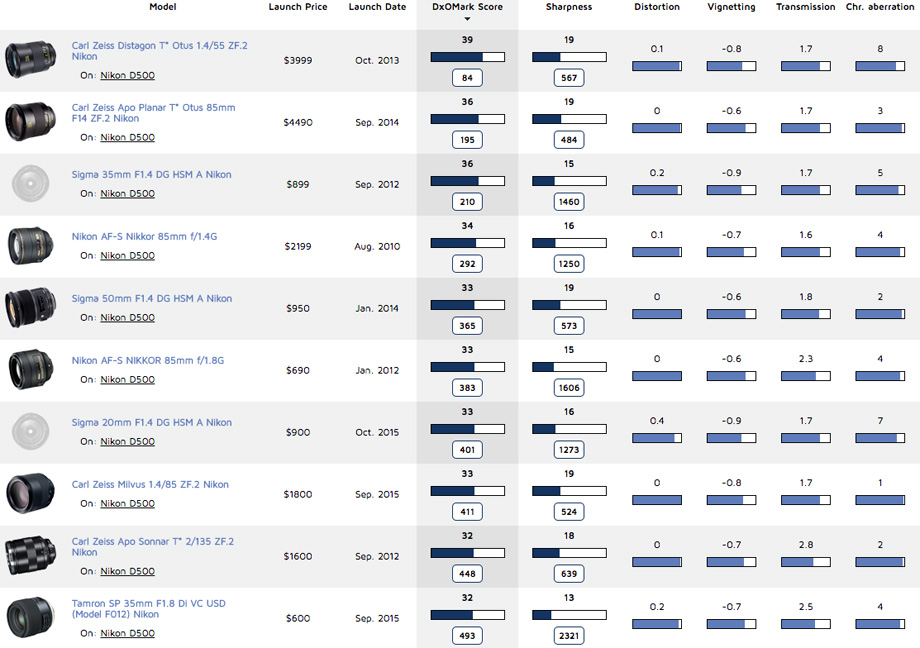
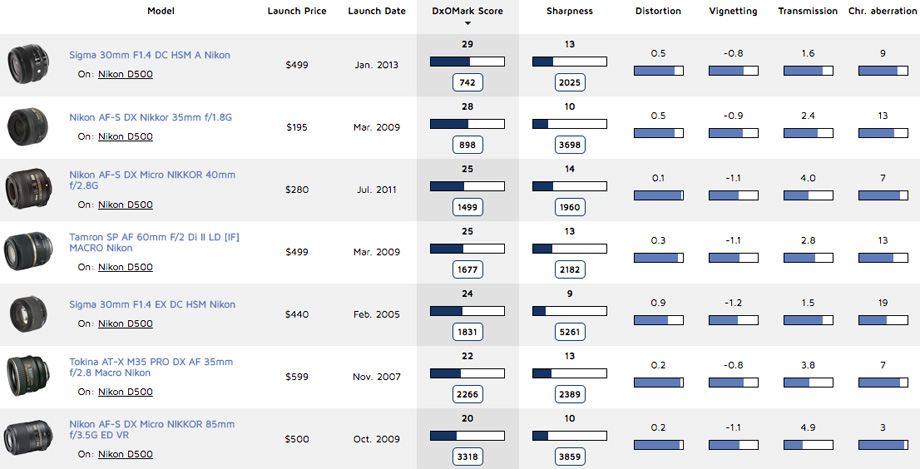

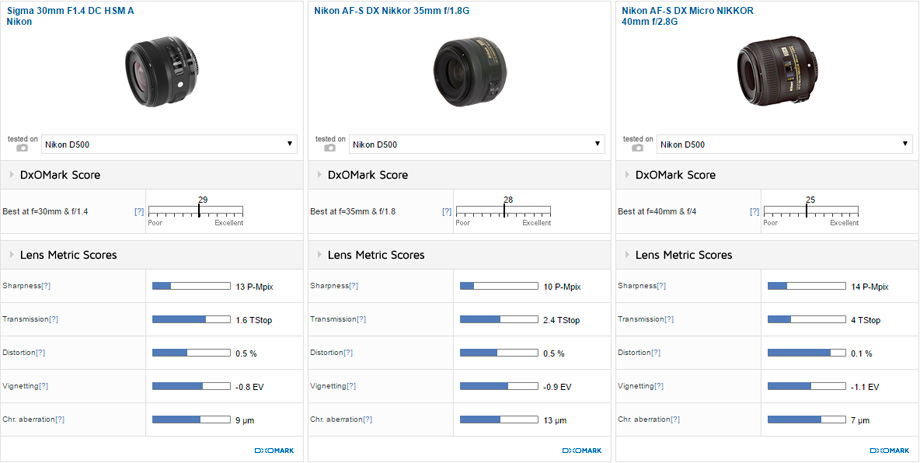
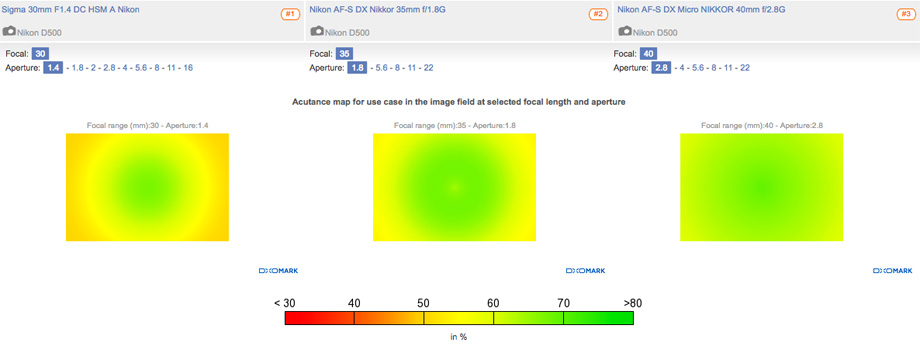
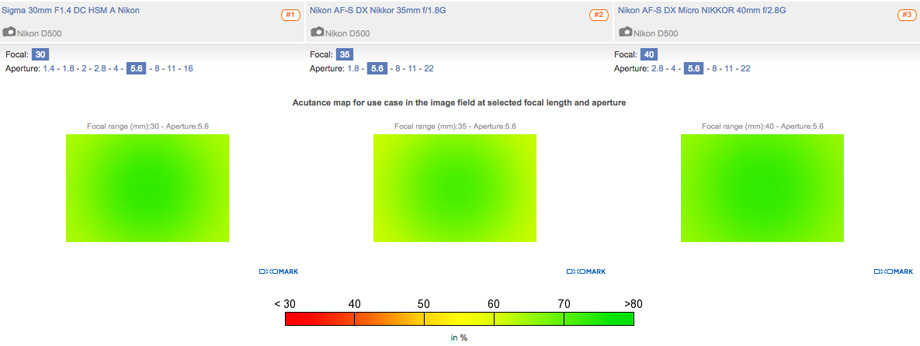
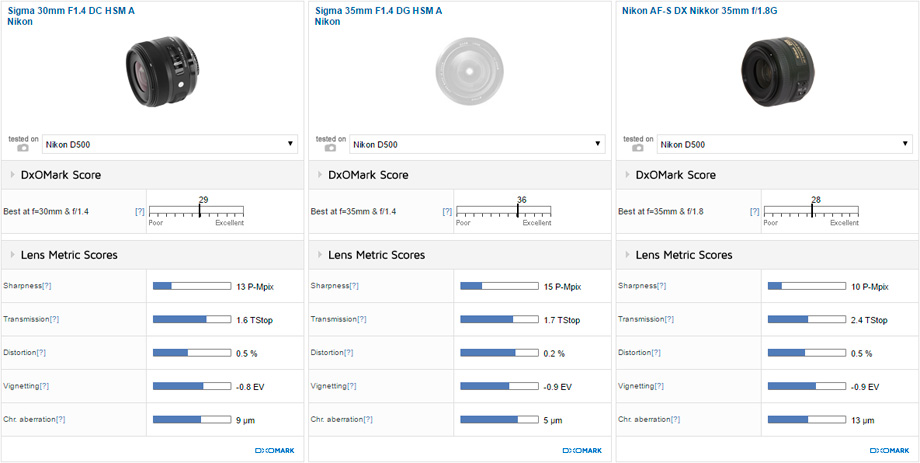
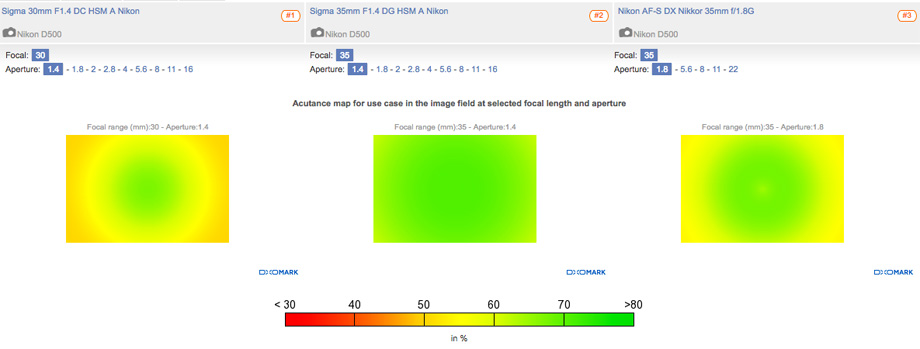
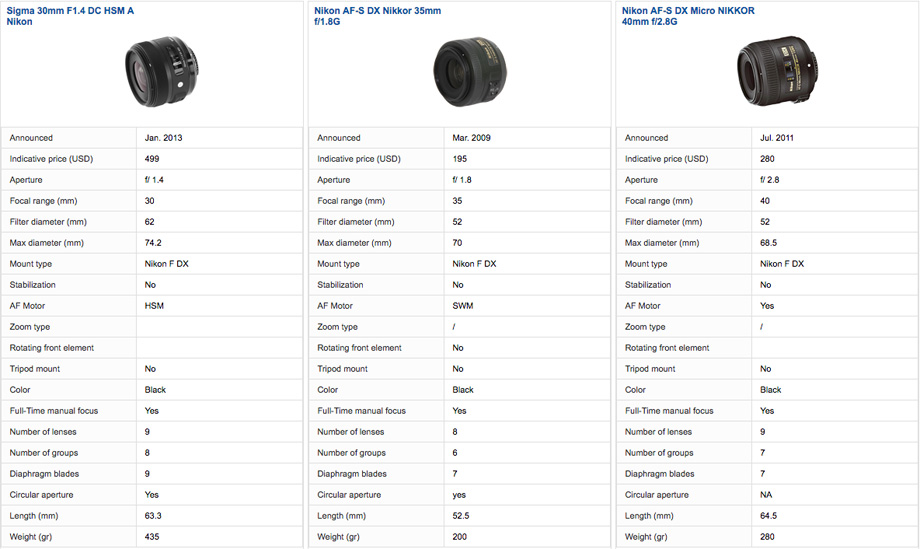
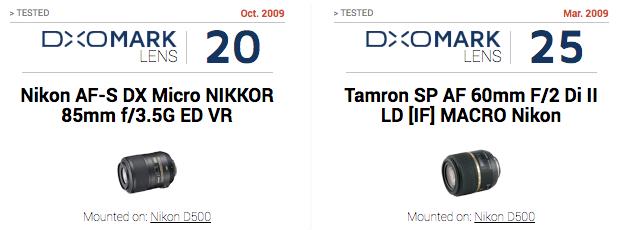
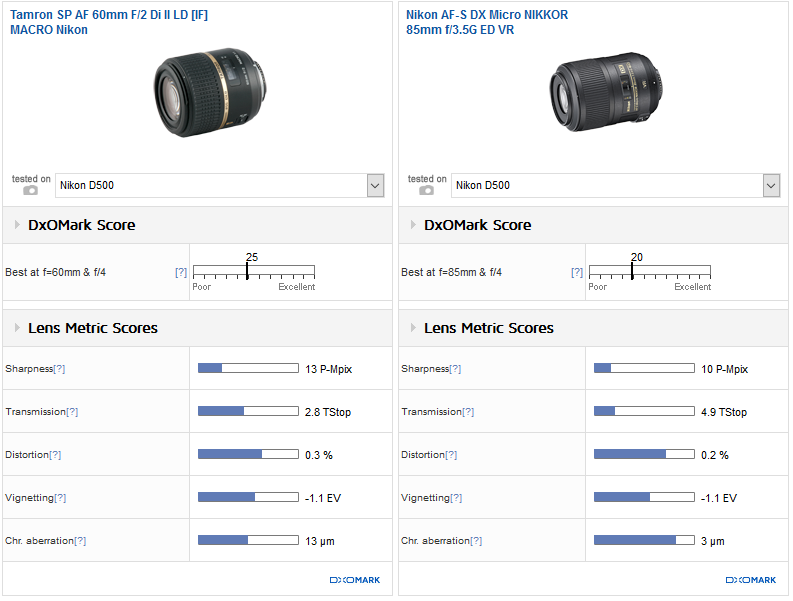
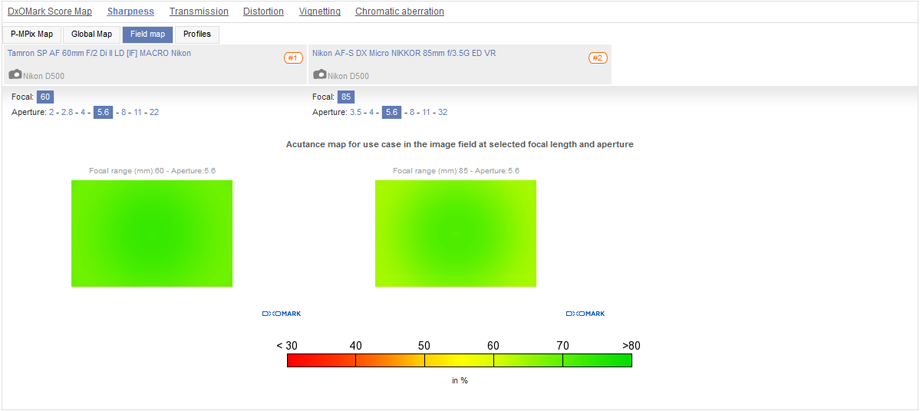
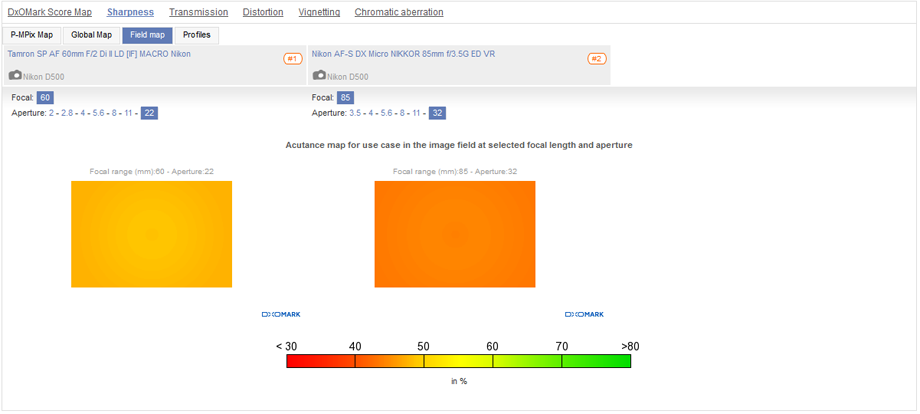

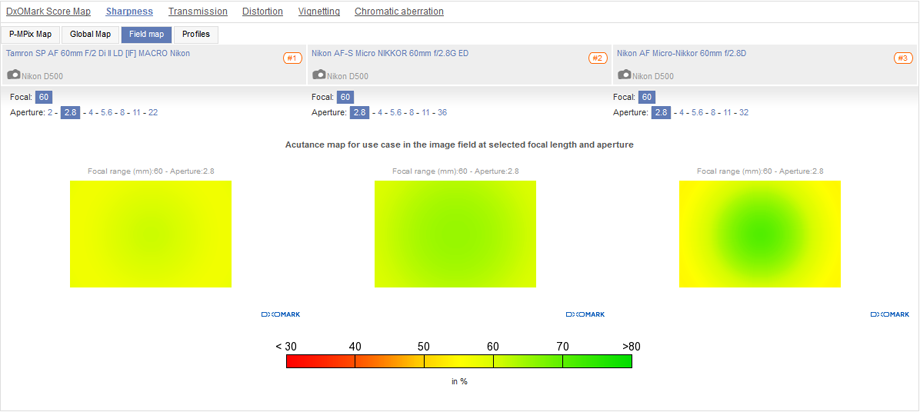
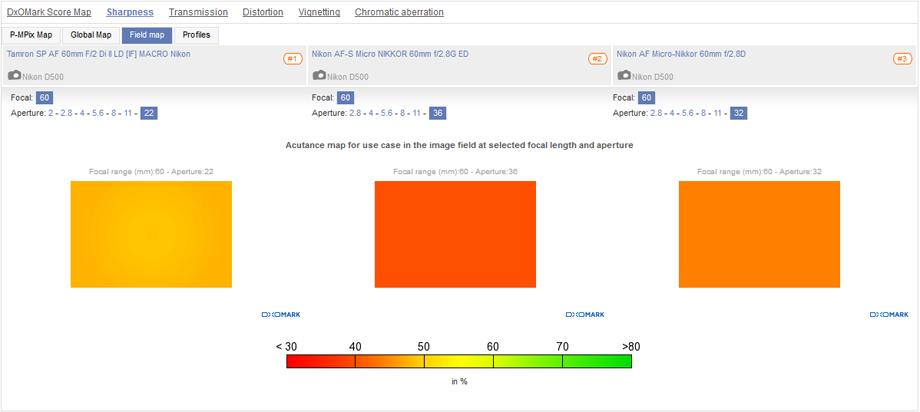
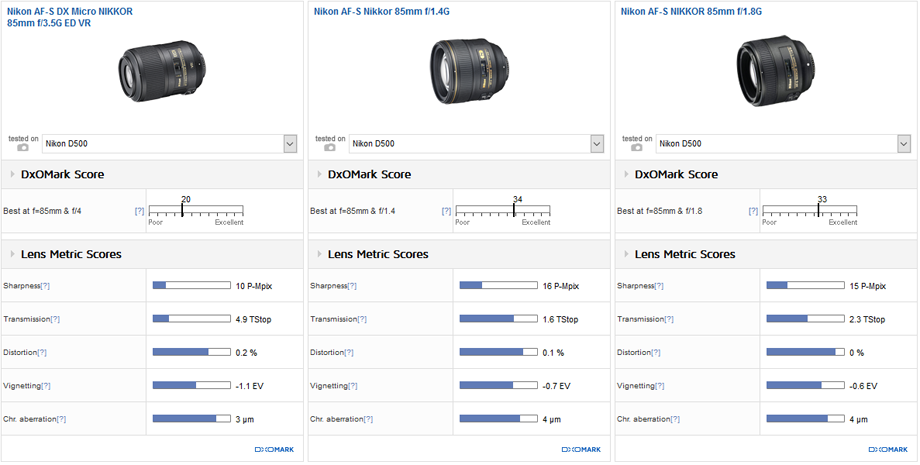
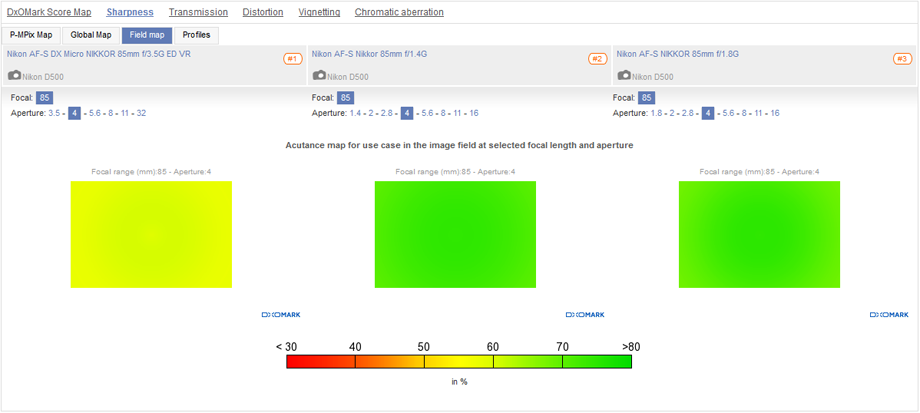
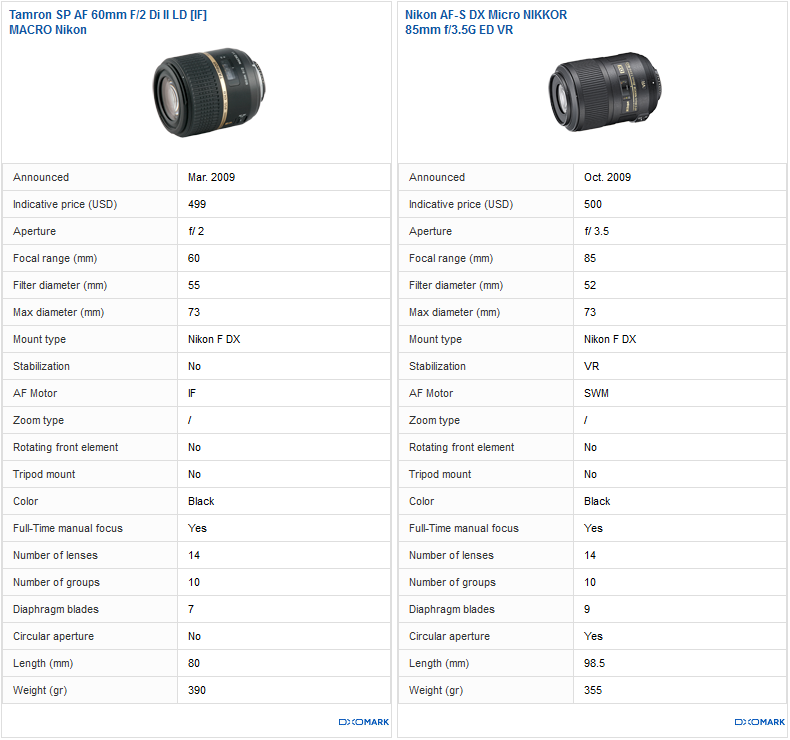
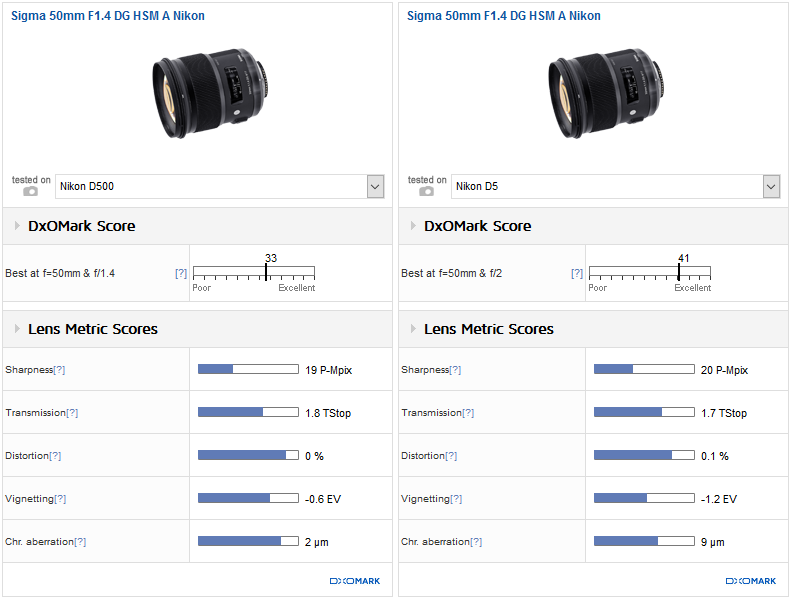
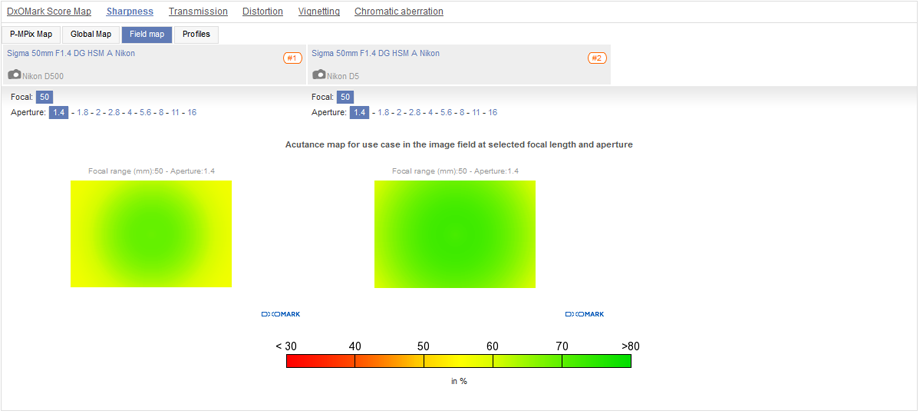
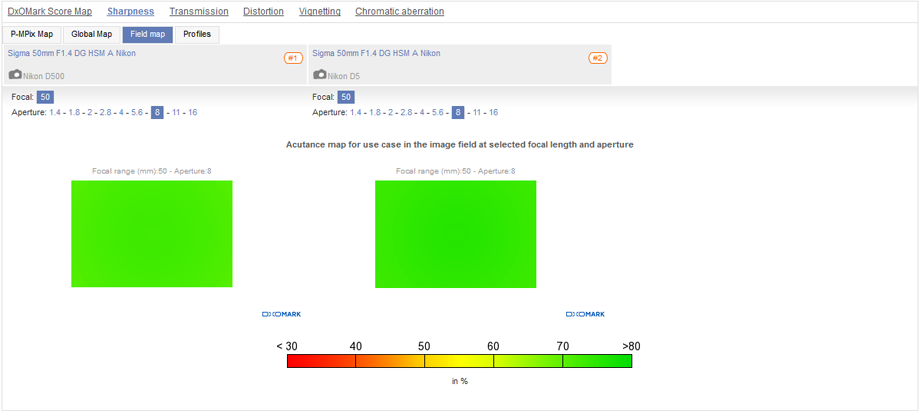
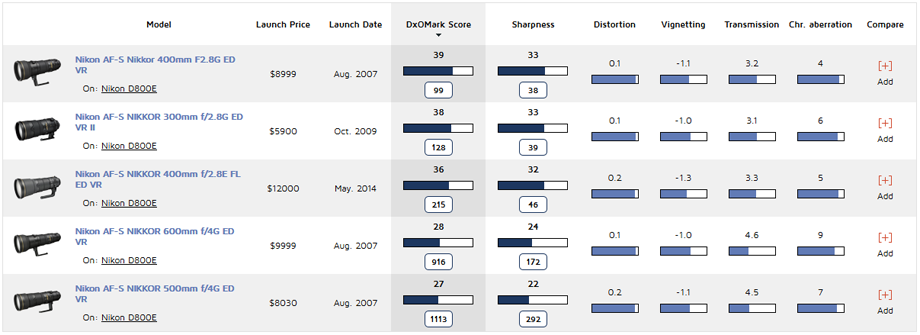
DXOMARK encourages its readers to share comments on the articles. To read or post comments, Disqus cookies are required. Change your Cookies Preferences and read more about our Comment Policy.